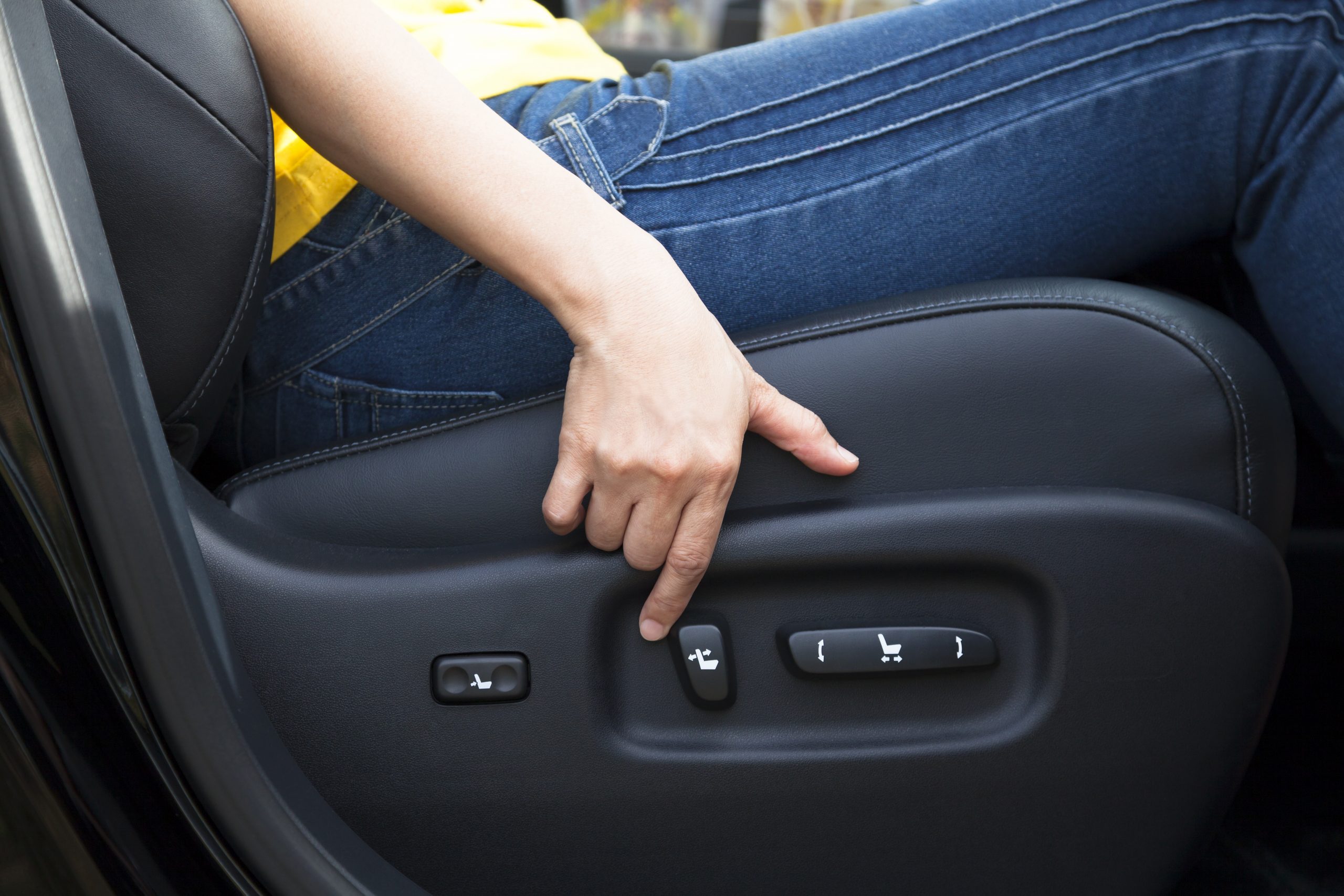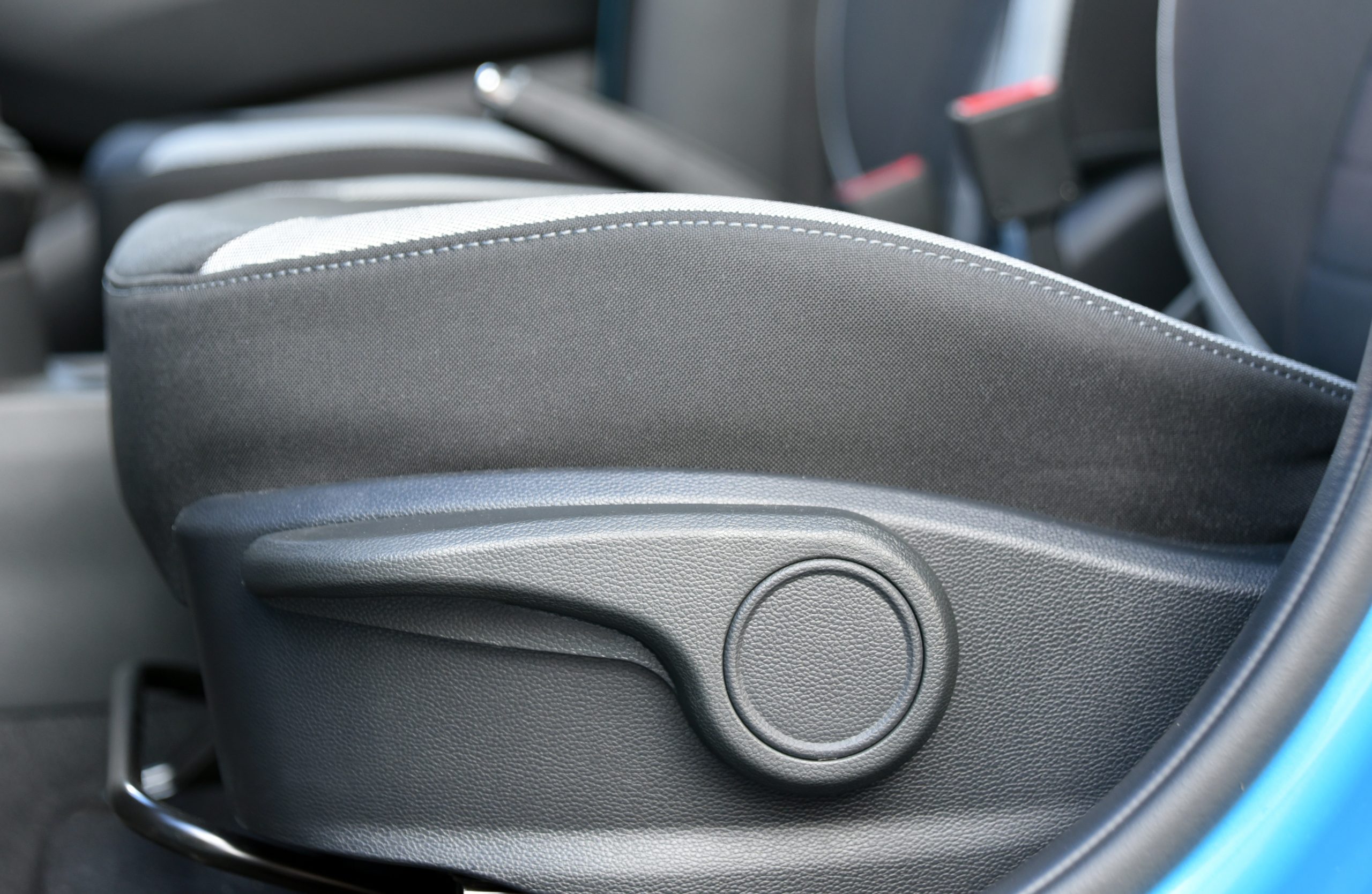Seat Position Controls

Seat Position Controls
Imagine trying to drive a vehicle when the driver’s seat is too high, low, or far from the controls. That would be uncomfortable and potentially dangerous. Most vehicles allow for drivers to adjust their seats to the right height and angle to reduce stress on their backs, legs, and other body parts. All drivers should know how to use these seat position controls to make their trips as safe and comfortable as possible.
Sometimes, people have little control over the type of vehicle they drive, as is the case with company cars or delivery vans. However, as the Physiomed website points out, people can choose the size of their personal vehicles to suit their own height and weight. Thus, a very tall person should not try to drive a small car, while a short person might wish to avoid driving large vehicles with excessive space between the driver’s seat and the steering wheel.
Types of Adjustments
Even if it is not possible to suit the vehicle to the person, however, drivers can adjust a variety of aspects, including the distance between the seat and the steering wheel, the height of the seat, and more. Adjusting these features will help drivers find the most comfortable position where they can also use the steering wheel and pedals properly.

The Canadian Centre for Occupational Health and Safety recommends beginning with seat height. Short drivers should make sure that they are able to reach the pedals comfortably while still being able to see over the dashboard. Tall drivers should ensure that they can sit straight without knocking their heads on the top of the car. Usually a knob or lever controls seat height. Drivers should remember to adjust the mirrors after moving the seat so that they can still see the road around them.
Some vehicles also allow drivers to adjust the length of the seat. This feature is especially useful for short people who might find that a seat in its regular position digs into the back of their legs. Ideally, the back of the knees should be about three to six centimetres from the edge of the seat. If the knees are too close to the edge of the cushions, the danger is that the driver will be unable to move easily from one pedal to another or might accidentally kick at the wrong spot. However, allowing enough space for the knees to bend properly will give drivers extra control.
Adjusting for Height
One of the simplest ways of adjusting the seat for the driver’s height is through moving it backwards and forwards. Usually, a lever under the seat controls this feature. While sitting in the seat, the driver pulls up on the lever and pushes back or pulls forward on the seat to be able to reach the accelerator, brake, and clutch comfortably. It should be possible to press the pedals to the floor if necessary. Normally, the front passenger’s seat also adjusts in the same way.

Drivers can also adjust the angles of the seat cushion and back rest. Moving the seat cushion can help people with back trouble to sit more comfortably, and it can also help people who need more support under their legs to be able to sit up while still being able to reach the pedals. Similarly, adjusting the angle of the back rest can help people with long or short arms to be able to maintain their position in the vehicle.
Generally, drivers should be able to hold the steering wheel with their arms bent slightly at the elbow. That way, they can turn the wheel as much as necessary without having to lean forward. In this position, they should also be able to lean against the back rest so that they will have support in case of an accident, besides becoming less tired along the way.
As the Canadian Centre for Occupational Health and Safety website notes, leaning too far back can cause muscle fatigue, neck and shoulder pain, and tingling or numbness in the fingers. Any of these symptoms can distract drivers from keeping their attention on the road and can potentially cause an accident.
Lumbar Support
Lumbar support is another very important aspect of seat control adjustment. The Spine Health website describes the lumbar, or lower back, area as a structure of interconnected bones, muscles, ligaments, joints, and nerves. Although this structure is strong enough to support the entire upper body, it is also very susceptible to stress and injury. Accidents can damage the lumbar area, potentially leaving the affected person in pain for years afterwards. The pain of a sore back can also make it difficult to concentrate on driving while trying to find a comfortable position.
Even without the damage of an accident, the lumbar area needs support, especially on long journeys. The pain of a sore lower back can be a minor inconvenience or it can be debilitating, making it difficult for drivers to move from the accelerator to the brake or to turn the steering wheel properly, to perform shoulder checks, or to complete a number of other necessary driving tasks.
Extra Help for Drivers
The seat controls are designed to help with many issues, but drivers may also need extra assistance. Often, adjusting the angle of the seat cushion or back are enough to support the lumbar area, but some drivers may need to buy a special pillow to support the lower back. Cushions can help shorter people to gain the height they need to see over the dashboard, while pulling the seat forward can help them reach the pedals. Although seats are designed to help drivers to be both comfortable and safe, drivers still might need to look for additional solutions.
The position of vehicle seats is very important for the safety and comfort of road users. Drivers should always be sure to use the seat position controls to adjust for their height and other physical attributes, as well as to take care of anything that might hinder their ability to operate a vehicle. These small knobs and levers can help make driving easier and safer.
